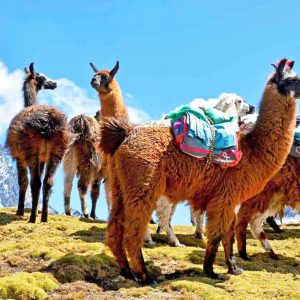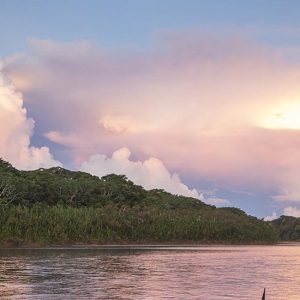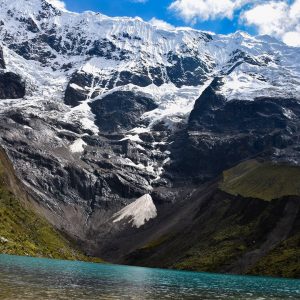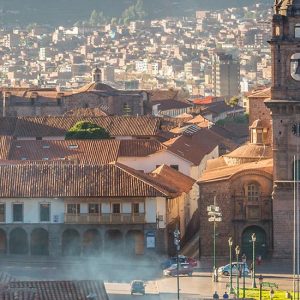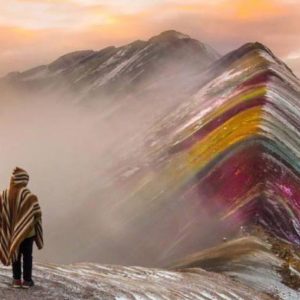Manu National Park is an extensive park in southeastern Peru, which stretches across the highlands of the Andes, featuring cloud forests and thick jungle plains. It is known for its rich biodiversity, especially for its hundreds of bird species, such as macaws, which feed on clay deposits in sites such as Blanquillo. Boats navigate the Manu River and the dense Amazon rainforest, which is home to jaguars, black alligators and spider monkeys.
How to get there?
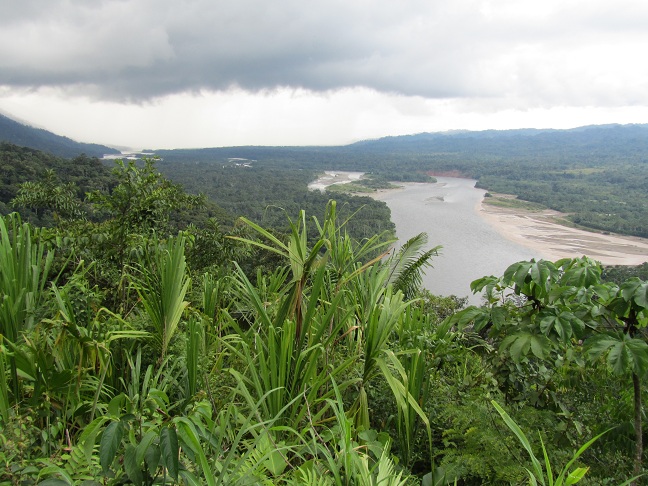
From Cusco you travel on a road with spectacular views through the mountains and jungle that eventually reaches Manu National Park. Ideally, it is best to start out early in the morning to get the most out of this breathtaking landscape. You will know you are getting close to Manu National Park when the road changes to a dirt road after which you must finsh the journey traveling by river. Although it is ideal to make the trip with private transportation, there are also different public transport options. The journey will take you around six hours and you will reach one of the most diverse natural protected areas on the planet.
After travelling south for 2 hours and taking a mountain with many switchbacks, you will get your first glimpse of the snowy Pitusiray of the Sacred Valley and Mount Ausangate, the sacred mountain of Cusco. On the left side of the road you will find mountains with spectacular views compared to the plains and open farming fields found on the right. On this section of the trip there is no telephone signal or places to buy supplies until reaching Paucartambo. This small town will be the only place where you can find a National Bank. For these reasons, this beautiful town with a colonial bridge and beautiful houses is ideal to resupply and get a phone signal before continuing the journey onward to the jungle. This is the final valley before climbing the last mountains of the Eastern Cordillera mountain range from where you begin descending to the Amazon.
After 1 hour, you arrive at the entrance of the Manu National Park at Abra Ajanaco (3,560m/11,679ft) with a spectacular view of the cloud forest called “Kosñipata”, which in Quechua means “place where there is smoke”. You will see how apt the name is when you look over the clouds covering the low jungle and see mountains that sometimes peek out but are usually lost in the dense clouds. Thus begins the magical descent to Manu. Very close to Ajanaco is the Wayqecha Biological Station, of the NGO ACAB (Association for the Conservation of the Amazon Basin), a research lodge that also welcomes tourists with an unbeatable view of the cloud forest and an amazing diversity of birds and orchids.
Leaving Wayqecha, you continue the descent as the forest increasingly grows taller with massive trees. You will feel the temperature rise as you continue to go down. Here we find the natural habitat of the Gallito de las Rocas, the national bird of Peru. To reach Pilcopata, the capital of Kosñipata with restaurants and small hotels which is the largest town in Manu, we journey 2 to 3 more hours along the main road. We will pass several interesting routes, one of them being the Villa Carmen Biological Station. Another is the route that leads to the communities Huachipaeris de Queros and Huacaria, where it is possible to visit the community members, learn about their customs and their great wisdom about the forest that surrounds them.
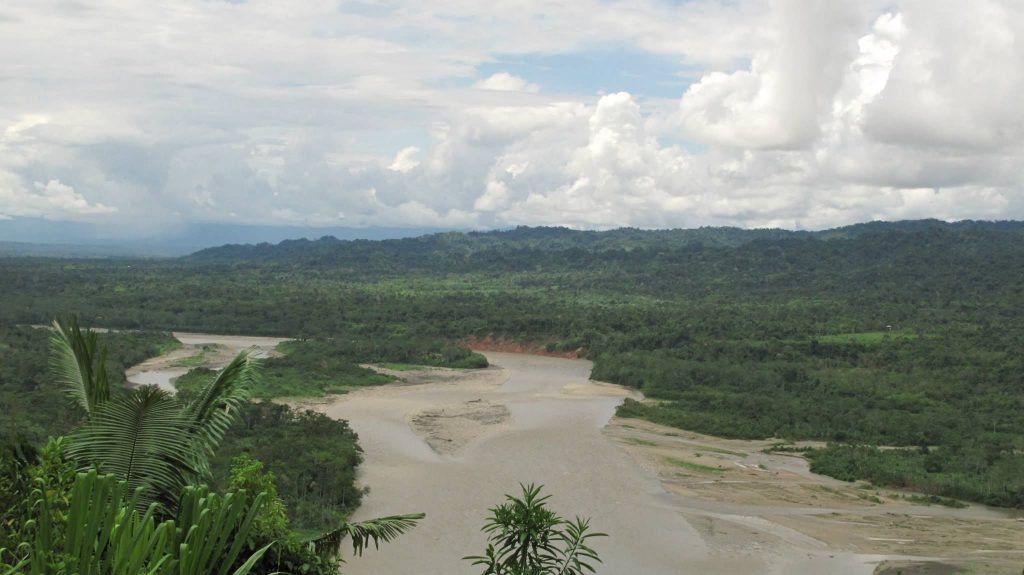
Weather in the Manu National Park
Manu’s extreme topography creates multiple microclimates. Lower elevation areas are hotter with average temperatures ranging from 35°C (95°F)during the day to 25°C (77°F) at night. In Manu’s higher elevation areas, temperatures are generally cooler. Expect warm temperatures during the day and cool nights. Temperatures can drop after heavy rains, reaching as low as 10°C (50°F).
Keep in mind that this is the rainforest and showers are possible at any time of year. Officially, the rainy season is from December to March. May to August is drier, though also much warmer.
What to pack: bring light, quick-drying clothes. Preferably synthetic fabrics, as the humidity prevents cotton from fully drying out.
Manu National Park Facts
- The National Park covers the entire Manu River basin
- It spans eastern Andes mountains (cloud forest) and Amazon basin (tropical lowland rainforest)
- There are around 2,000 to 5,000 species of plants, including 250 species of trees
- More than 1,000 vertebrate species including 200 species of mammals and 850 species of birds, 68 species of reptiles, 77 species of amphibians in the National Park
- Over 1,300 recorded species of butterflies
- There are 13 species of primates
- A few rare species include: the giant otter, giant armadillo, jaguars, puma, Andean mountain cat
- Pre-Inca and Inca ruins and petroglyphs indicate long history of indigenous settlement
- There are small communities of the Matsigenga Amazonian tribal group, largely along the Manú River or one of its main tributaries
ATTRACTIONS IN MANU NATIONAL PARK
TRES CRUCES LOOKOUT POINT
An additional 60km from Paucartambo, Mirador Tres Cruces is a lookout point over the meeting place of the Andes and the Amazon. On clear days, it’s possible to see the peak of the massif Ausangate all the way down into the depths on the jungle basin. In the dry season from May to August, a natural phenomenon causes the illusion of three rising suns that flicker into cross shapes, hence, “tres cruces.” As the sun rises, clouds begin to evaporate, the moisture interacts with the sunlight to form a prism.
KOSÑIPATA RIVER VALLEY
From Paucartambo, continuing past Acjanaco Pass (12,630 ft / 3,850 m) and the turnoff to Tres Cruces, the road begins its ascent into the gorgeous Kosñipata Valley dropping thousands of meters in elevation. This is the place to go for river rafting and mountain biking tours through Peru’s gorgeous cloud forest mountains. It’s also the route to rainforest lodges in Manu including Paradise Lodge, Gallito de las Rocas Lodge, and Erika Lodge. The Quechua word kosñipata means “place of smoke” in reference to the heavy mists that shroud the eastern flanks of the Andes as they plummet to meet the Amazon.
BOCA MANU
Located at the meeting point of the Madre de Dios and the Manu river, the village of Boca Manu has a small airport that receives charter airplanes. It’s also a stop on the route over land and by boat from Puerto Maldonado. The checkpoint to go further into the park is in nearby Limonal.
Animals in the Manu National Park
Living within the thriving ecosystems of Manu are many species of wildlife flying, fluttering, and climbing overhead. As the varied landscape offers a unique combination of flora, so does it provide a range of fauna to be witnessed. So far, this includes 222 species of mammals, 99 species of reptiles, 140 species of amphibians, 1,000 species of birds, 210 species of fish, and over 2,300 insects (not including the numerous species that remained unnamed).
Some of the most impressive and notable of the rich and diverse wildlife of Manu National Park are the Peruvian jaguar, macaws, the puma, the ocelot, the giant otter, the giant anteater, the giant armadillo, the Brazilian tapir, a variety of sloths, marsh deer (especially unique as it is actually a savanna animal), and fourteen different species of monkeys.
Monkeys are one of the more common sights for visitors, known for playing in the trees and watching the activity below. Guests can also expect an array of birds and butterflies constantly swooping through the rainforest canopy, and maybe even a sighting of several unique reptiles and insects . Keep your eyes peeled for one of the rarer jungle mammals, and perhaps you will leave with the sighting of a lifetime.
Essentials things to take for the Manu Nation Park Tour
- Dry bags or ziplock bags: humidity is intense, keep your gear and important documents dry
- Long sleeve shirts and long pants: keep insects off, preferably breathable and quick drying
- Insect repellent (Deet 70): protect yourself from mosquitos and other biting critters
- Cash: there are no ATMs in the rainforest. Bring small bills to pay for drinks, snacks, and gratuities
- Headlamp or flashlight: many lodges have no or limited lighting after dark
- Comfortable, Closed shoes: sticky, slippery, sometimes muddy rainforest trails make sandals and heels impractical
- Camera gear: extra batteries, lenses, memory cards
- Water resistant binoculars: to get a better look at the wildlife
- Daypack (30L): carry water, poncho, and other essentials during daytime excursions
Manu National Park Information has been updated on June 2024.



